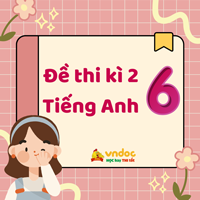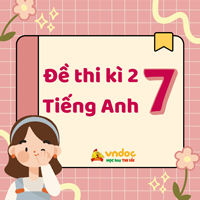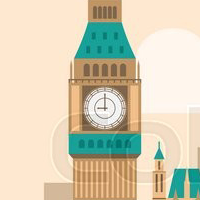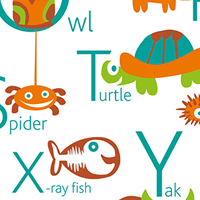Đề thi thử THPT Quốc gia môn Tiếng Anh năm 2018 có đáp án + giải thích chi tiết (Đề số 15)
Đề ôn thi THPT Quốc gia môn tiếng Anh
VnDoc.com xin giới thiệu đến các bạn Đề thi thử THPT Quốc gia môn Tiếng Anh năm 2018 có đáp án + giải thích chi tiết (Đề số 15) được sưu tầm và đăng tải nhằm mang đến cho các bạn nguồn tài liệu ôn tập hữu ích để chuẩn bị tốt nhất cho kì thi quan trọng đang đến rất gần. Sau đây mời các bạn vào tham khảo.
Mark the letter A, B, C, or D on your answer sheet to indicate the word or phrase that is OPPOSITE in meaning to the underlined part in each of the following questions.
Question 1: About 95 percent of all animals are invertebrates which can live anywhere, but most, like the starfish and crabs, live in the ocean.
A. with backbones B. with ribs C. without ribs D. without backbones
Question 2: He had never experienced such discourtesy towards the president as it occurred at the annual meeting in May.
A. politeness B. rudeness C. measurement D. encouragement
Mark the letter A, B, C, or D on your answer sheet to indicate the correct answer to each of the following questions.
Question 3: - "Mr. Adams is going to retire next month."
- “__________.”
A. Oh, I haveno idea B. Right, you’d probably be the next.
C. Youdon't say! D. Congratulations!
Question 4: - “______________”
- "Never mind, better luck next time."
A. I’ve broken yourprecious vase. B. I have a lot on my mind.
C. I couldn’t keep my mindon work. D. I didn't get the vacant position.
Question 5: Nobody could have predicted that the show would arouse so much interest and that over two hundred people___________ away.
A. wouldturn B. would have turned
C. would have tobe turned D. had been turned
Question 6: No matter how angry he was, he would never___________ to violence.
A. exert B. resolve C. resort D. recourse
Question 7: The effect of the painkiller is____________ and I begin to feel the soreness again.
A. turningout B. doing without C. fading away D. wearing off
Question 8: She has just bought_____________.
A. an interesting oldFrench painting B. an interesting French old painting
C. a French interestingold painting D. an old interesting French painting
Question 9: It never____________ my head that such a teưible thing would happen.
A. struck B. dawned C. occurred D. entered
Question 10: Sarah and I __________ reserved the rooms in the same hotel. She was really surprised to see me there.
A. coincidentally B. practically C. intentionally D. deliberately
Question 11: We spent nearly 3 hours waiting outside the station, then out_____________.
A. thestar came B. did the star come C. came the star D. under
Question 12: Hats like this may have been fashionable in the 60's, but now they are__________ the times.
A. behind B. over C. beneath D. under
Question 13: My mother often____________ our mistakes, whereas my father is very strict and punishes us for even the slightest one.
A. neglects B. overlooks C. avoids D. passes
Question 14: Children who are isolated and lonely seem to have poor language and___________.
A. Communicate B. Communication C. Communicative D. Communicator
Question 15: Despite all the evidence, he wouldn’t admit that he was in the_________.
A. fault B. error C. wrong D. slip
Question 16: I don’t suppose there is anyone there,______________?
A. is there B. isn't there C. do I D. don't I
Mark the letter A, B, C,or D on your answer sheet to show the underlined part that needs correction
Question 17: An important factor should be considered is Mr. Lopez's ability to keep the new restaurant going for several A B C
months with limited revenue. D
Question 18: Mobility is one of the characteristics ofen demanded of executives, and they must accustom themselves to A B C
move quite regularly. D
Question 19: Not until recent has interest in synthetic fuels been revived. A B C D
Mark the letter A, B, C, or D on your answer sheet to indicate the word whose underlined part that differs from the other three in the pronunciation in each of the following questions.
Question 20: A. touch | B. watch | C. machine | D. armchair |
Question 21: A. famous | B. nervous | C. loud | D. serious |
Mark the letter A, B, C, or D on your answer sheet to indicate the word that differs from the rest in the position of the main stress in each of the following questions.
Question 22: A. zoology B. conquest C. cement D. duet
Question 23: A. photocopy B. particular C. enthusiasm D. economy
Mark the letter A, B, C or D on your answer sheet to indicate the word or phrase that is CLOSEST in meaning to the underlined part in each of the following questions.
Question 24: At fifty-five, he began life again, determined with his pen to wipe out the debt.
A. rubout B. pay off C. bump off D. give up
Question 25: The National Institute of Mental Health is conducting far-reaching research to determine the psychological effects of using drugs.
A. refined B. extensive C. prevalent D. tentative
Read the following passage and mark the letter A, B, C, or D on your answer sheet to indicate the correct answer to each of the questions.
Most forms of property are concrete and tangible, such as houses, cars, furniture or anything else that is included in one’s possessions. Other forms of property can be intangible, and copyright deals with intangible forms of property. Copyright is a legal protection extended to authors of creative works, for example books magazine articles, maps, films, plays, television shows, software, paintings, photographs, music, choreography in dance and all other forms of intellectual or artistic property.
Although the purpose of artistic property is usually public use and enjoyment, copyright establishes the ownership of the creator. When a person buys a copyrighted magazine, it belongs to this individual as a tangible object. However, the authors of the magazine articles own the research and the writing that went into creating the articles. The right to make and sell or give away copies of books or articles belongs to the authors, publishers, or other individuals or organizations that hold the copyright. To copy an entire book or a part of it, permission must be received from the copyright owner, who will most likely expect to be paid.
Copyright law distinguishes between different types of intellectual property. Music may be played by anyone after it is published. However, if it is performed for profit, the performers need to pay a fee called a royalty. A similar principle applies to performances of songs and plays. On the other hand, names, ideas and book titles are excepted. Ideas do not become copyrighted property until they are published in a book a painting or a musical work. Almost all artistic work created before the 20th century is not copyrighted because it was created before the copyright law was passed.
The two common ways of infringing upon the copyright are plagiarism and piracy. Plagiarizing the work of another person means passing it off as one’s own. The word plagiarism is derived from the Latin plaglarus, which means “abductor”. Piracy may be an act of one person, but, in many cases, it is a joint effort of several people who reproduce copyrighted material and sell it for profit without paying royalties to the creator. Technological innovations have made piracy easy and anyone can duplicate a motion picture on videotape a computer program, or a book. Video cassette recorders can be used by practically anyone to copy movies and television programs, and copying software has become almost as easy as copying a book. Large companies zealously monitor their copyrights for slogans, advertisements, and brand names, protected by a trademark
Question 26: What does the passage mainly discuss?
A. Legal rights ofproperty owners B. Legal ownership of creative work
C. Examples ofcopyright piracy D. Copying creating work for profit
Question 27: The word “principle” in paragraph 3 is closest in meaning to
A. crucialpoint B. cardinal role C. fundamental rule D. formidable force
Question 28: Which of the following properties is NOT mentioned as protected by copyright?
A. musicand plays B. paintings and maps
C. printedmedium D. scientific discoveries
Question 29: It can be inferred from the passage that it is legal if______________
A. two songs, written by two different composers, have the same melody
B. two books, written by two different authors, have the same titles
C. two drawings, created by two different artists, have the same images
D. two plays, created by two different playwrights, have the same plot and characters
Question 30: With which of the following statements is the author most likely to agree?
A. Teachers are not allowed to make copies of published materials for use by their students
B. Plays written in the 16th century cannot be performed in theaters without permission
C. Singers can publicly sing only the songs for which they wrote the music and the lyrics
D. It is illegal to make photographs when sightseeing or traveling
Đáp án Đề thi thử THPT Quốc gia môn tiếng Anh năm 2018
1A | 2A | 3B | 4D | 5C | 6C | 7D | 8A | 9D | 10A |
11C | 12A | 13B | 14B | 15C | 16A | 17A | 18D | 19B | 20C |
21C | 22C | 23A | 24B | 25B | 26Đ | 27C | 28D | 29B | 30A |
3IC | 32A | 33B | 34B | 35C | 36B | 37C | 38C | 39D | 40D |
41Đ | 42 B | 43 B | 44A | 45C | 46A | 47B | 4SB | 49D | 50C |
Đề thi thử THPT Quốc gia môn Tiếng Anh năm 2018 có đáp án + giải thích chi tiết (Đề số 6)
Đề thi thử THPT Quốc gia môn Tiếng Anh năm 2018 có đáp án + giải thích chi tiết (Đề số 7)
Đề thi thử THPT Quốc gia môn Tiếng Anh năm 2018 có đáp án + giải thích chi tiết (Đề số 8)
Trọng âm, câu điều kiện, word form...là những dạng bài thường xuyên xuất hiện trong đề thi THPT Quôc gia môn tiếng Anh. Song song với việc luyện đề các bạn cũng nên ôn tập các chuyên đề ngữ pháp riêng biệt, cụ thể để nắm chắc, yên tâm bước vào kì thi sắp tới.












